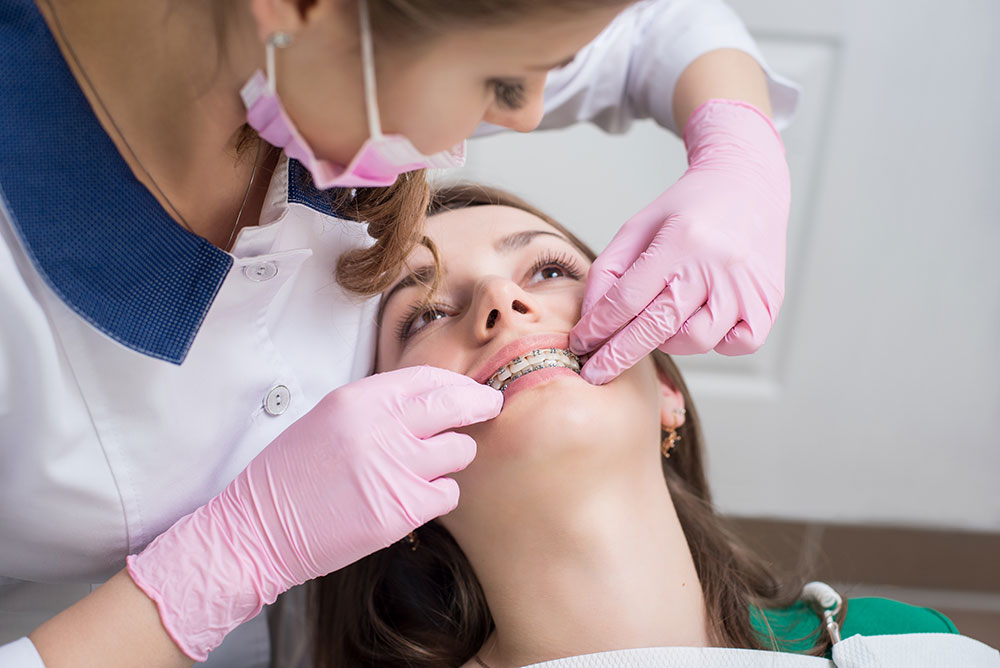The Best Guide To Legacy Orthodontics
The Best Guide To Legacy Orthodontics
Blog Article
The Basic Principles Of Legacy Orthodontics
Table of ContentsLegacy Orthodontics for BeginnersThe Basic Principles Of Legacy Orthodontics The 10-Second Trick For Legacy OrthodonticsThe Main Principles Of Legacy Orthodontics The 7-Minute Rule for Legacy Orthodontics
In addition, we supply flexible treatment schedules, flexible payment options and a fun, satisfying experience.An orthodontist is a dental practitioner educated to identify, protect against, and treat teeth and jaw irregularities. Orthodontists function with individuals of all ages, from kids to adults.
Malocclusion, or misaligned teeth, can lead to oral concerns, consisting of dental cavity, gum tissue disease, and difficult or agonizing eating. Not every person is birthed with straight teeth. If you have a bad bite or big rooms in between your teeth, you may intend to speak with a dental professional focusing on orthodontic treatment.
The Ultimate Guide To Legacy Orthodontics
( Picture Debt: DigitalVision/Getty Images) Orthodontists utilize fixed and removable dental devices, like dental braces, retainers, and bands, to change the position of teeth in your mouth. Orthodontic treatment is for oral problems, including: Jagged teethBite problems, like an overbite or an underbiteCrowded teeth or teeth that are too far apartJaw misalignmentThe goal of orthodontic therapy is to boost your bite.
A healthy bite ensures you can consume, chew, and speak properly. While you could believe of orthodontists as primarily for children or young adults who need braces, they can correct oral problems at any type of age. Orthodontists participate in college, oral school, and orthodontic school. After college graduation, they invest 2 or 3 years in an orthodontic residency program.
, however not all dental practitioners are orthodontists. They concentrate on two areas: Exactly how to appropriately and safely move teeth Exactly how to correctly direct advancement in the teeth, jaw, and faceOnce an orthodontist has completed training, they have the alternative to end up being board certified.
Top Guidelines Of Legacy Orthodontics
Misalignment, or malocclusion, is the most typical factor individuals see an orthodontist. It is genetic and is the result of size distinctions in between the upper and reduced jaw or in between the jaw and teeth. Malocclusion results in tooth overcrowding, a twisted jaw, or irregular bite patterns. Malocclusion is generally treated with: Your orthodontist connects metal, ceramic, or plastic square bonds to your teeth.
If you have only small malocclusion, you might be able to utilize clear braces, called aligners, rather than conventional braces (https://sandbox.zenodo.org/records/145080). Some individuals require a headgear to aid relocate teeth into line with stress from outside the mouth. After dental braces or aligners, you'll need to use a retainer. A retainer is a custom tool that maintains your teeth in place.
They're usually utilized on kids. They can create additional area in the mouth without needing to pull teeth. If you have a major underbite or overbite, you may need orthognathic surgery (also called orthodontic surgical procedure) to extend or reduce your jaw. Orthodontists make use of cords, medical screws, or plates to sustain your jaw bone.
You might require to see an orthodontist if you have: Crowding or not enough area for every one of your teethOverbite, when your upper teeth come your bottom teethUnderbite, when your base teeth are as well far forwardSpacing or problems with gapsCrossbite, which is when your upper teeth fit behind your bottom teeth when your mouth is closedOpen bite or an upright space between your front bottom and upper teethMisplaced midline, when the facility of your bottom and upper teeth do not line up Remedying a dental malocclusion can: Make attacking, eating, and speaking easierImprove the proportion of our face and your overall appearanceEase discomfort from temporomandibular joint problemsSeparate your teeth and make them much easier to cleanse, aiding prevent dental caries or dental caries It's often a dental expert who initially notifications misaligned teeth during a regular exam.
The Single Strategy To Use For Legacy Orthodontics

During your first orthodontic appointment, you'll likely have: A dental examPhotos taken of your face and smileDental X-raysPanoramic (360 level) X-rays of your face and headImpressions to create molds of your teethThese examinations will certainly help your orthodontist know just how to wage your therapy. orthodontics. An orthodontist is a dental practitioner that's had training to treat your teeth and jaw
An orthodontist is focused on your bite, so something like a chipped tooth would be taken care of by a dental professional. Orthodontists are focused on your bite, or the way your teeth fit together, and the straightness of your teeth.
Ever before wondered how celebs constantly appear to have completely lined up teeth? The solution often depends on the skilled hands of an orthodontist. Yet what exactly does an orthodontist do? Orthodontists are dental professionals that focus on fixing irregularities in the teeth and jaws. Their competence surpasses simply developing an attractive smile; it includes boosting your total dental health and function.
How Legacy Orthodontics can Save You Time, Stress, and Money.

While dental braces are one of the most frequently acknowledged orthodontic therapy, orthodontists have a diverse toolkit at their disposal. The specific technique picked relies on the extent of the situation, the person's age, and specific preferences. These tried-and-true dental braces make use of a system of brackets adhered to the teeth and connected by wires.
Clear aligners, like Invisalign, are a preferred option for patients seeking a much more very discreet therapy option. These detachable trays are custom-made to gradually change the teeth's placement. Headgear may be utilized combined with braces or aligners to apply additional targeted forces, specifically for correcting jaw discrepancies. In instances of go to this website narrow jaws, palatal expanders can be used to produce room for appropriate tooth placement.
Report this page